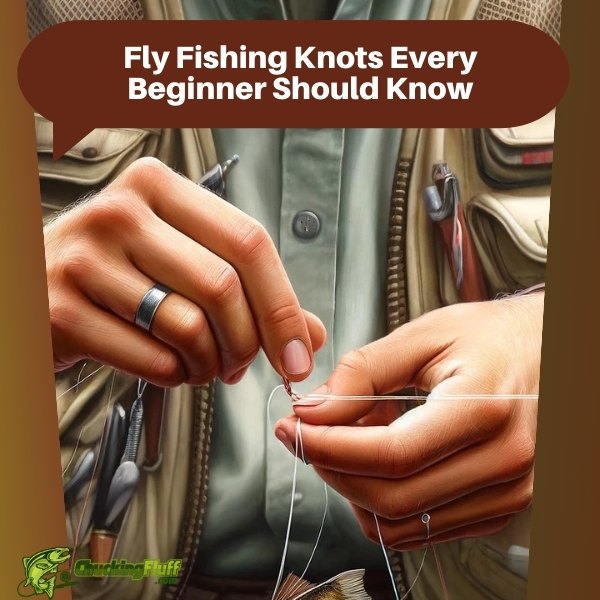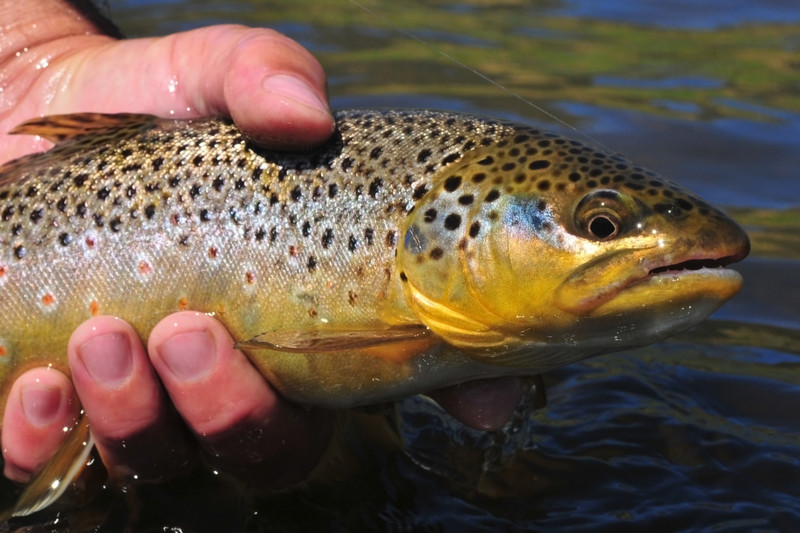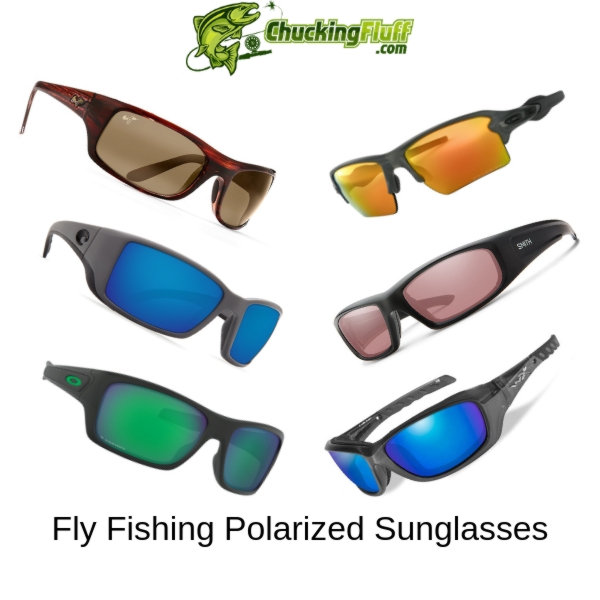| Disclosure: Just to be open and honest the buttons and links you click on in the website will in most cases take you to another website where you can purchase the products I am reviewing. As an Amazon Associate I earn from qualifying purchases. |
Fly Fishing Knots Every Beginner Should Know

Fly fishing is not just about casting a line; it’s about the delicate dance between angler and fish, where every move matters. As a beginner in this artful sport, one of the most crucial skills to master is tying the right knots. The knots you tie determine the strength of your connection to the fish, and thus, your success on the water. In this guide, we’ll explore the essential fly fishing knots every novice angler should know, guiding you through the intricate steps of tying each one.
Quick Post Navigation
- Introduction to Fly Fishing Knots
- Basic Knots for Fly Fishing
- Intermediate Knots for Fly Fishing
- Advanced Knots for Fly Fishing
- Tips for Learning and Practicing Knots
- Common Mistakes and How to Avoid Them
- Safety Precautions While Tying Knots
- The Connection Between Knots and Success in Fly Fishing
- Conclusion
- FAQs (Frequently Asked Questions)
- “Check out some of our other Buying Guides”
Introduction to Fly Fishing Knots
What are fly fishing knots?
Fly fishing knots are specialized ties used to connect various components of your fly fishing setup, including the fly line, leader, tippet, and fly. Each knot serves a specific purpose, whether it’s securing the fly to the tippet or joining two pieces of line together.
Importance of mastering knots for beginners
For beginners, mastering fly fishing knots is akin to learning the alphabet before diving into literature. These knots lay the foundation for successful fishing adventures, ensuring that your gear remains intact during the most crucial moments of battle with a fish.
Basic Knots for Fly Fishing
Clinch Knot
The clinch knot is one of the most fundamental knots in fly fishing, used to secure the fly to the tippet. Its simplicity and reliability make it a favorite among beginners and seasoned anglers alike.
Improved Clinch Knot
Similar to the standard clinch knot, the improved clinch knot offers added security by incorporating an extra loop. This knot is ideal for attaching flies with small eyes or delicate materials.
Surgeon’s Knot
The surgeon’s knot is a versatile knot used to join two pieces of line together. It’s particularly useful when attaching a leader to the fly line or connecting sections of tippet.
Blood Knot
The blood knot is another essential knot for connecting two pieces of line. Its slim profile and strength make it ideal for joining different diameters of line with minimal bulk.
Intermediate Knots for Fly Fishing
Nail Knot
The nail knot is a sleek and compact knot used to attach the leader to the fly line. Despite its name, no nail is required; instead, a small tool or improvised device can aid in tying this knot.
Uni Knot
The uni knot, also known as the Duncan loop, is a versatile knot that can be used for attaching flies, joining lines, or securing terminal tackle. Its simplicity and strength make it a favorite among anglers.
Double Surgeon’s Knot
As the name suggests, the double surgeon’s knot is a variation of the standard surgeon’s knot, providing added security with an extra pass through the loop. This knot is ideal for joining two lines of unequal diameter.
Advanced Knots for Fly Fishing
Albright Knot
The Albright knot is a powerful knot used for joining lines of different materials or diameters. Its streamlined profile and strength make it ideal for connecting backing to fly line or attaching a leader to the fly line.
Perfection Loop
The perfection loop is a non-slip loop knot used for creating loops at the end of the leader or fly line. This knot allows for easy attachment of flies or terminal tackle while maintaining maximum strength.
Bimini Twist
The Bimini twist is a complex knot used to create a strong loop at the end of the line. While challenging to tie, it provides unparalleled strength and is commonly used for creating leaders or attaching shock tippets.
Tips for Learning and Practicing Knots
Mastering fly fishing knots takes time and practice, but with dedication and patience, you can become proficient in no time. Here are some tips to help you along the way:
- Importance of practice: Set aside dedicated time to practice tying knots regularly, both at home and on the water.
- Using visual aids and tutorials: Take advantage of online tutorials, books, and videos to learn new knots and improve your technique.
- Seeking guidance from experienced anglers: Don’t hesitate to ask for help from seasoned anglers or instructors who can offer valuable tips and advice.
Common Mistakes and How to Avoid Them
While learning to tie fly fishing knots, it’s common to encounter challenges and make mistakes along the way. Here are some common pitfalls to avoid:
- Rushing the tying process: Take your time and focus on each step of the knot-tying process to ensure a secure and reliable connection.
- Using inappropriate line and tippet sizes: Match your knots to the diameter and material of your line and tippet for optimal performance.
- Ignoring proper lubrication: Use saliva or a dedicated lubricant to reduce friction and ensure smooth knot tightening.
Safety Precautions While Tying Knots
While tying knots may seem like a harmless activity, it’s essential to take precautions to avoid injury. Here are some safety tips to keep in mind:
- Protecting your fingers: Use caution when handling sharp hooks and tools, and consider wearing protective gloves if necessary.
- Proper lighting and workspace: Ensure that you have adequate lighting and a clean, clutter-free workspace to tie knots safely and efficiently.
- Being cautious with sharp tools: Handle scissors, knives, and other sharp tools with care to avoid accidental cuts or punctures.
The Connection Between Knots and Success in Fly Fishing
The knots you tie are the lifeline between you and the fish, determining whether your efforts result in success or disappointment. Well-tied knots instill confidence in your gear and allow you to focus on the thrill of the chase, knowing that your connections are strong and secure.
Conclusion
Mastering fly fishing knots is an essential skill for beginners embarking on their angling journey. By learning and practicing the fundamental knots outlined in this guide, you’ll gain the confidence and competence needed to tackle any fishing scenario with ease.
FAQs (Frequently Asked Questions)
Q) How long does it take to master fly fishing knots?
A) Mastery of fly fishing knots varies depending on individual skill and dedication. With regular practice, most anglers can become proficient within a few weeks to months.
Q) Are there any shortcuts for learning knots?
A) While there are no shortcuts to mastering knots, utilizing visual aids and seeking guidance from experienced anglers can expedite the learning process.
Q) What should I do if my knot keeps slipping?
A) If your knot keeps slipping, ensure that you’re tying it correctly and using appropriate lubrication. You may also need to adjust the tension or consider using a different knot.
Q) Can I use the same knot for different types of fishing lines?
A) While some knots are versatile and can be used with various types of fishing lines, it’s essential to match the knot to the specific diameter and material of the line for optimal performance.
Q) How often should I replace my tippet and leaders?
A) Tippet and leaders should be replaced regularly, especially if they show signs of wear or damage. Inspect your gear before each fishing trip and replace any worn or compromised components.



